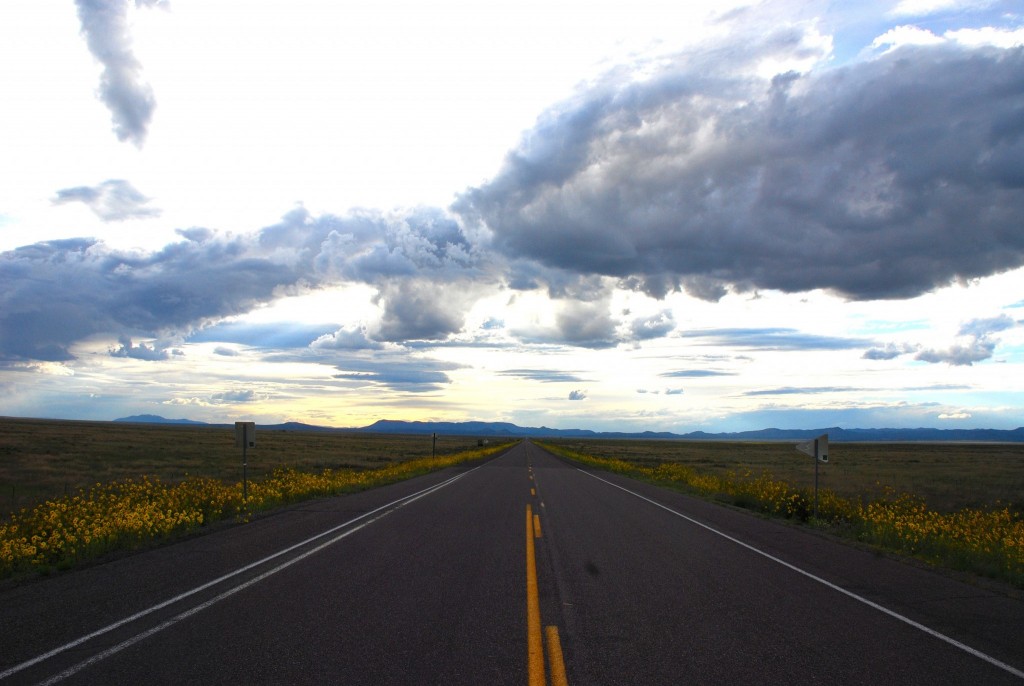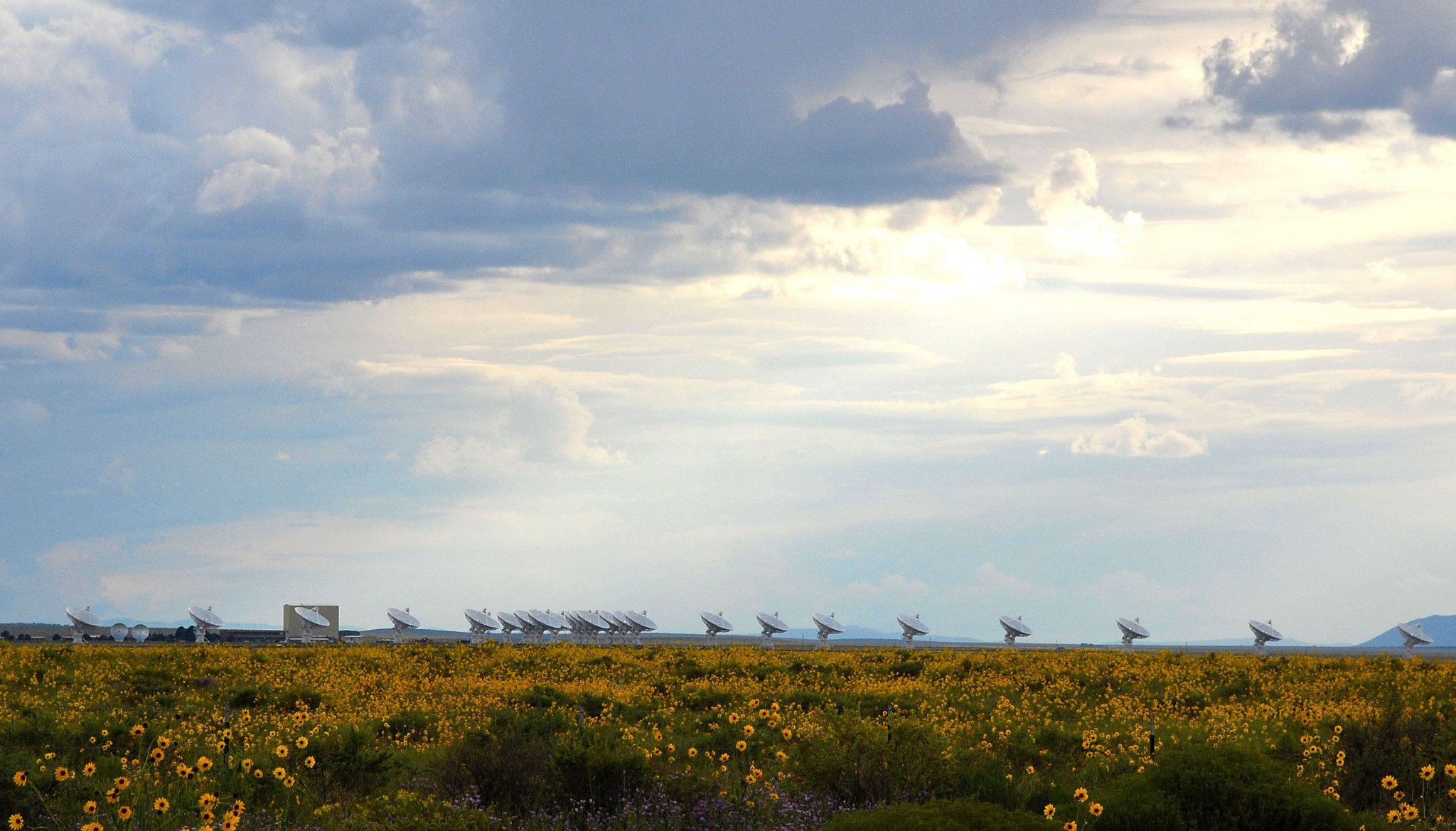Even if you’ve never visited the Very Large Array, you’ve probably seen it. Maybe it was in a movie like Contact, The Visit or Terminator Salvation. Or you saw it in a rock video by Bon Jovi. Heck, the VLA is even in a current GMC truck ad.
But nothing quite prepares you for what you see as you drive on US 60 westward from the 400-year-old Spanish colonial town of Socorro, New Mexico, and the old cattle town of Magdalena. After 50-odd miles, you descend to the Plains of San Agustin, a big, grassy basin surrounded by mountains. Here, in the middle of nowhere, an apparition rises on the horizon – a row of what looks like giant toadstools arranged horizontally on both sides of the highway (see photo above). As you get closer, you can see that the toadstools are actually giant dish-shaped objects.
Of course, you aren’t surprised. Why else would you be out here if not to visit the VLA? Well, for one thing, US 60 is a great alternative route for road trippers heading from Albuquerque and points east to Phoenix or California. Not only is it a more scenic route than I-40, it offers the VLA as a bonus. While the VLA isn’t a primary road trip destination, it’s certainly worth a side trip and a two-hour visit.
Welcome to the National Radio Astronomy Observatory’s Karl Jansky Very Large Array – VLA for short.
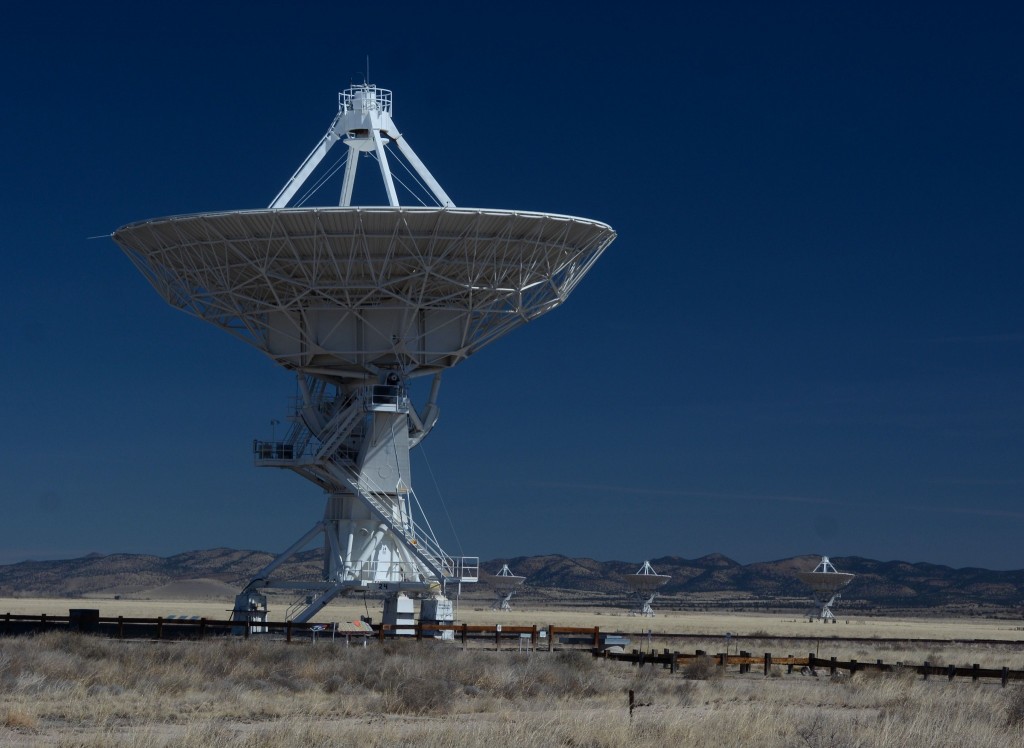
What is the VLA?
For most of our history, what we knew about the heavens was based on observing visible phenomena. Traditional telescopes could only be used at night. That limitation was challenged in the 1930s when Karl Jansky discovered that space matter emits radio waves. This enabled scientists to detect once-invisible light types, thus greatly expanding the frontiers of astronomical knowledge.
The VLA is a single, powerful telescope that monitors the cosmos day and night by using 27 dish-shaped antennas. It’s the most powerful astronomical observatory of its kind. To quote from the walking tour map I was given during my visit,
“Radio waves reveal previously unseen activities of stars, galaxies, and planets, and map the chemical workings of the gas and dust clouds that create them. Optical telescopes cannot see into these places, because those same clouds block their view.
“Unhindered, radio waves can travel for billions of years across the vastness of space. They provide the VLA with the data that help us construct a timeline of the universe – from its ancient past to its possible future. Since it began watching the skies back in 1976, the VLA has observed nearly 43,000 different cosmic objects.”
How it works
When you get close, you see that the dish antennas are huge. Each of the 27 dishes is 94 feet tall and 82 feet in diameter. They’re arranged in a Y-shaped path extending up to 13 miles in each direction from the main complex — you can clearly see the path from space with Google’s satellite view. The dish assemblies sit on rails and can be moved using custom-built flatbed locomotives that weigh 90 tons. The dishes transmit data via fiber optic cable to a supercomputer, which turns the data into one gigantic telescope that creates, as VLA promos claim, “an entire new catalog of human knowledge.” Scientists at a facility in Socorro then analyze and interpret the data.
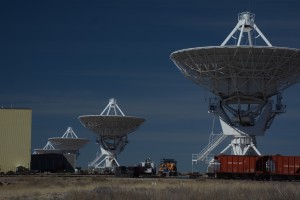
Why is the VLA in the middle of nowhere? The radio waves are disrupted by human communications, including internet transmissions and even cell phone usage. When you visit, you’ll be asked to turn off your phone. (You probably won’t get service out here, anyway.)
None of the dishes rotated or moved during my two-hour visit. They are typically repositioned along the railway lines every four months or so, but the dishes tilt and rotate much more often than that.
Nothing can take the place of actually visiting the VLA, but you can view the 24-minute video shown in the visitor center without leaving home. It’s narrated by Jodie Foster, who starred in the movie Contact. Go to www.public.nrao.edu/gallery/beyond-the-visible-vla; you may have to copy the link and paste it into your browser. The video includes interviews with VLA scientists, as well as examples of the stunning images produced by the radio telescope.
Logistics
The VLA is just over an hour’s drive west of Socorro on US 60. Socorro, in turn, is 78 miles south of Albuquerque on I-25. You’ll find good accommodations in Socorro. Heading west? Visitor services can be found in Springerville, Show Low and Globe, Arizona.
Visitors are welcome at the VLA. Hours are 8:30 to sunset daily. Admission is $6 for adults, $5 for seniors, 17 and under free. The visitor center shows the Jodie Foster video described above. From there, you can take a self-guided tour with displays along the route. One stop lets you get up close and personal with one of the VLA antennas. Keep in mind that the elevation here is over 7,000 feet, so a leisurely pace is recommended for flatlanders. Be sure to bring your own food; there’s no restaurant or store nearby.
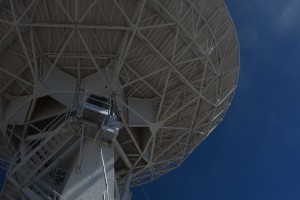
If you can time your visit for the first Saturday of any month, you can take a 45-minute guided tour that takes you to areas not part of the self-guided tour. These are held at 11, 1 and 3; no reservations are needed. In addition, VLA staff and volunteers host special family activities aimed at kids. Finally, there’s a free guided night sky telescope viewing at the Etscorn Observatory on the New Mexico Tech campus in Socorro; it begins at dusk on first Saturdays.
For more information, go to www.public.nrao.edu/tours/visitvla
Now that I’ve reached the end of this post, I’ll share with you the one question that nagged at me while visiting the VLA:
So what?
